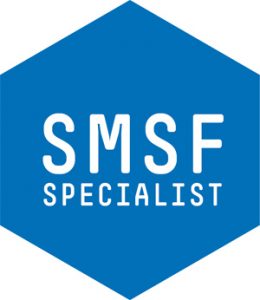The 2021-22 Federal Budget unveiled a range of initiatives aimed at providing additional flexibility across the retirement savings system.

While the majority centre on retirees and those nearing retirement, the Budget also contains key measures focused on improving retirement outcomes for low income earners and broadening the rules around using personal superannuation contributions towards purchasing a first home.
Below is a summary of various changes announced:
Removing the $450 per month superannuation threshold
Included within the Federal Government's Women's Budget Statement is an announcement that the $450 minimum monthly threshold for employees to be paid the compulsory Superannuation Guarantee levy, will be scrapped. This change is earmarked to start on 1 July 2022, subject to the passing of legislation.
The change will help improve retirement outcomes for all Australians on very low incomes, including older workers with part-time jobs as well as younger 'gig economy' workers, the majority of whom are women.
Removing the work test for non-concessional contributions
From 1 July 2022, people aged 67 to 74 will no longer be required to meet the work test when making non-concessional (or after- tax) superannuation or salary sacrificed (pre-taxed) personal contributions.
To meet the current work test for making these contributions, people must prove they are employed for at least 40 hours during a consecutive 30-day period in the financial year in which their contributions are made.
The rule change will mean people aged 67 to 74 will be able to make tax-paid superannuation contributions up to the annual non-concessional limits. They'll also be able to access the existing non-concessional 'bring-forward' rules allowing people to make up to three years' of contributions in one financial year.
Access to concessional personal deductible contributions for people aged 67 to 74 (for example for self-employed individuals) will still be subject to meeting the work test.
Improving the Pension Loans Scheme
Older Australians wanting to access equity in their home through the Federal Government's Pension Loan Scheme (PLS) will have more flexibility to boost their pension income and access lump sum payments.
Under the existing PLS, homeowners with a full-rate Age Pension can trade a portion of their home equity for an annual income boost worth 50 per cent of a full Age Pension, representing around $12,385 per year for singles and around $18,670 for couples. This is on top of receiving a full Age Pension.
Increased flexibility from 1 July 2022 will allow a full-rate age pensioner to access their entire annual PLS amount as a lump sum. Those with a part-rate Age Pension will also be able to access a lump sum worth 50 per cent of a full Age Pension.
Self-funded retirees of Age Pension age who do not receive any Age Pension will be able to use the PLS to receive an income boost over a year worth 1.5 times a full rate Age Pension payment.
This represents around $37,155 per year for singles and around $56,011 per year for couples.
Also, from 1 July 2022, the Government will introduce a No Negative Equity Guarantee for PLS loans and allow people access to a capped advance payment in the form of a lump sum.
Expanding the home downsizer scheme
The Government announced its intention to expand the current home downsizer scheme from 1 July 2022 by reducing the eligibility age to make downsizer contributions into superannuation from age 65 to 60.
The downsizer scheme enables people to make a one-off, non-concessional superannuation contribution of up to $300,000 per person using the proceeds from selling their family home.
The scheme is still subject to strict conditions, including that a principal place of residence must have been owned for at least 10 years.
Legacy product conversions
Another key measure is a temporary option for retirees to transition from older retirement products to more flexible and contemporary retirement products.
Many people are currently locked into products that restrict access to capital and flexibility of drawdowns.
A two-year period will be provided for conversion of market-linked, life-expectancy and lifetime pension and annuity products.
Retirees with these products will be able to exit them and transfer the remaining capital into a superannuation fund account. From there they'll be able to decide to commence a new retirement product, take a lump sum benefit, or retain the funds in that account.
Changes to the First Home Super Saver Scheme (FHSS)
From 1 July 2022, intending first home-owners will be able to contribute up to $50,000 in personal contributions to their superannuation (currently $30,000) for a first-home deposit.
Voluntary contributions made from 1 July 2017 up to the existing limit of $15,000 per year will count towards the total amount able to be released.
Individuals must still apply to the Australian Tax Office and receive an FHSS determination before signing a first-home contract or applying for release of any FHSS amounts.
Australian residency requirements
The Federal Government announced that, subject to legislation, from 1 July 2022 it will relax Australian residency requirements for both self-managed superannuation funds and small APRA-regulated funds.
It plans to extend the residency rules from the current two years to five years for both superannuation fund types for Australians to continue to contribute into their super fund if they temporarily live overseas.
By Tony Kaye
Senior Personal Finance Writer, Vanguard Australia
18 May, 2021
vanguard.com.au























